Anytime shop airlines come up and someone mentions using PVC for them a big discussion usually ensues over the safety of using PVC. I've used them for a number of years without a problem and like the cost and how easy it is to modify them. Now saying that don't let me or this page influence you on your decision on whether they are safe or not. You will have to decide for yourself. Below you will see how I modified mine to hopefully make them safer.
I have a two post lift and want to mount an airline reel on it which meant running an airline down in a very exposed location where it would be easy to hit it with something and possible crack or shatter it. This moved me to finally start covering up the lines I have.
........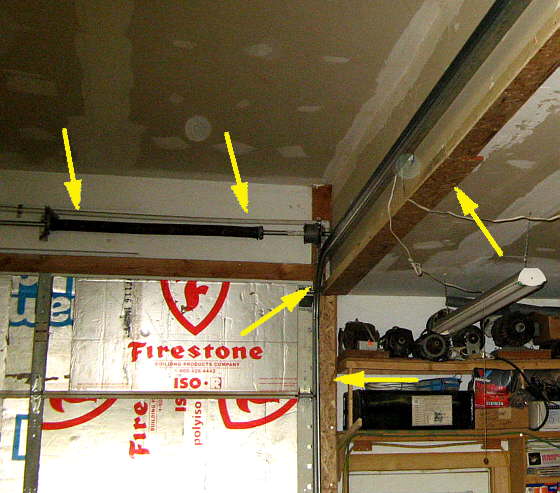
In this picture the two top arrows on the left point to an existing line that was going to supply air to the new line (top right arrow). This is how most of my shop lines have been run. High on a perimeter wall with no protection. The middle two arrows point to a drop in the line that goes to a regulator and oiler with a quick disconnect. That line was out in the open on the wall before I covered it.
........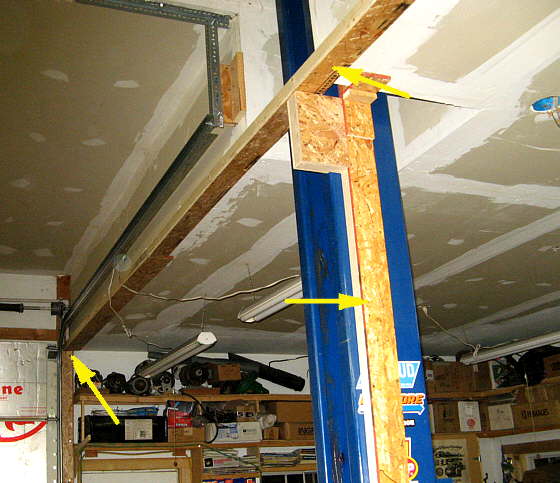
I had some strips of 1/2 inch wafer board (but could of cut some also) that I used to cover the older drop line and the newer run (going from the left arrow over to the top right arrow on the post of the lift. In this area my ceiling raises 2 feet for lift storage. I just screwed the wafer board to the lower ceiling part and left it hanging out far enough for the air line to lay on it. Then I took a 1 X 2 and screwed it to the outside edge with the airline just inside of it. If the line was to rupture I'm hoping that the boards would stop any flying debris that would of been headed down into the shop. In this case some still could fly upwards towards the high ceiling. I could put another piece of wafer board on top of the 1 X 2 if I felt I needed to completely box in the PVC line. The middle line points to the new drop down to the airline reel.
........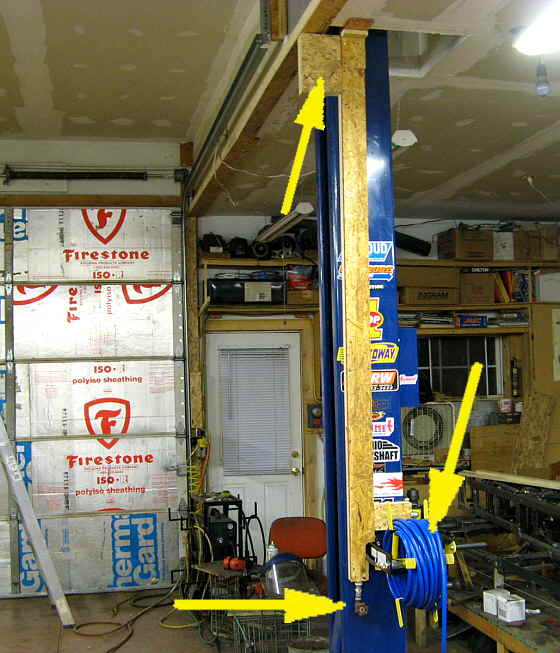
The top arrow points to a couple 90 deg. bends that I boxed in. They were needed to get the line from overhead to coming down the lift post. The lower left arrow points to a drain at the bottom of the drop and the right arrow to the new reel.
........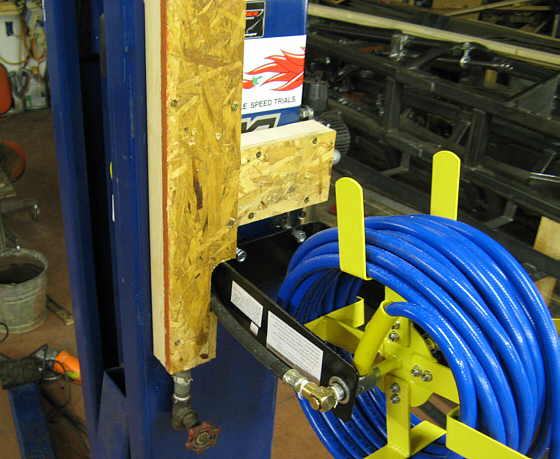
Here is a close-up of how the lines are boxed in. Use 1 X 2's on each side of the line and cover that with 1/2 inch wafer board. Simple, fast and cheap.
........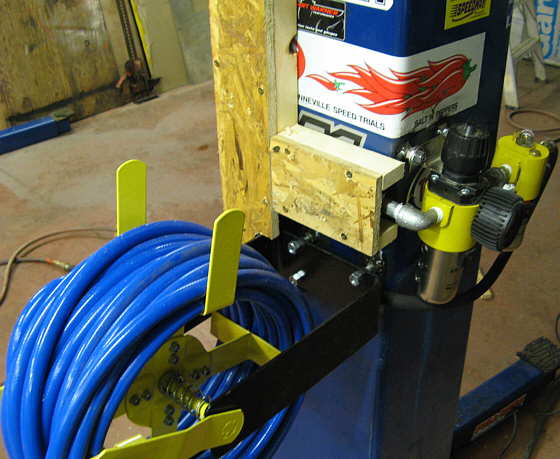
A view of the line coming out of the boxing and going from PVC to steel at the regulator. I mounted the reel and regulator to the lift post by welding bolts on the post.
........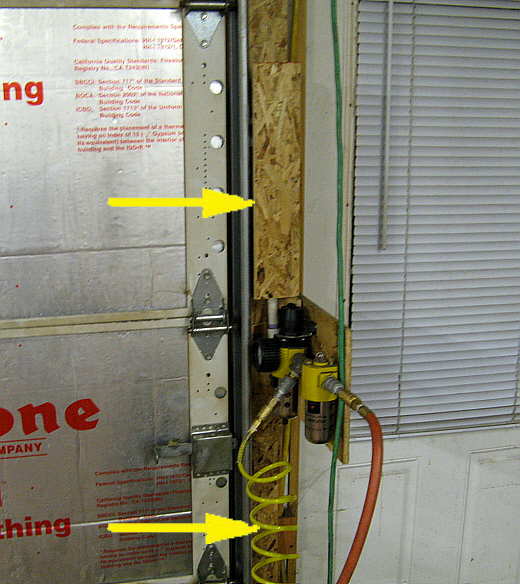
The lines in the picture (where the arrows are pointing) were open before I boxed them in using pretty much the same technique, except here the door track boxes one side in.
........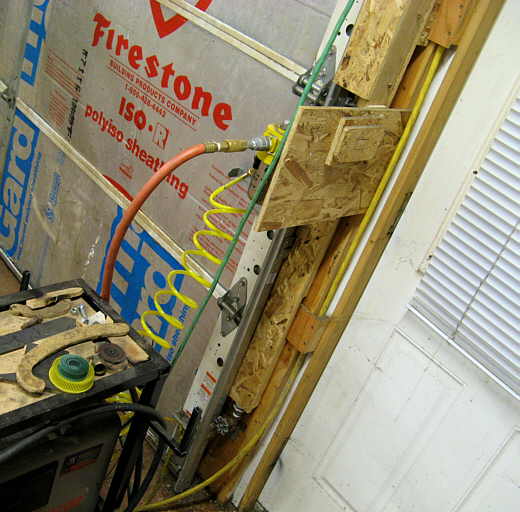
Here is the other side and you can see the drain at the bottom of the drop. One of these lines is an airline to use with air tools and the yellow one goes to the plasma cutter.
I plan on doing the rest of the lines in the shop in the same manner. I did the lines on this page in just an hour or so for hardly any money at all. One sheet of wafer board and some 1 X 2's will cover a lot of lines. I covered all the lines in the pictures with just some left over scrap. The use of grabber screws allows quick access to them in the future if you want to change anything.
Now I worry even less about my PVC lines in the shop.
..Return to Tech Info Page..............Return to Sumner's Home Page